RPK Light Machine Gun: Russia’s IAR?
May 16th, 2023
6 minute read
Stepping into the spotlight of Soviet military weaponry, the Ruchnoy Pulemyot Kalashnikova, or RPK, is a light machine gun the author feels is deserving of greater recognition. Created to support the AKM rifle on the battlefield, this fixed-barrel, magazine-fed weapon holds an intriguing position, acting as a squad automatic weapon for ComBloc troops. Despite its seemingly outdated design at the time of its debut, the Soviet Union’s RPK withstood the test of time, maintaining its standing as one of the world’s most undervalued weapons to this day. Dr. Will Dabbs gives us his first-hand view of the LMGs.
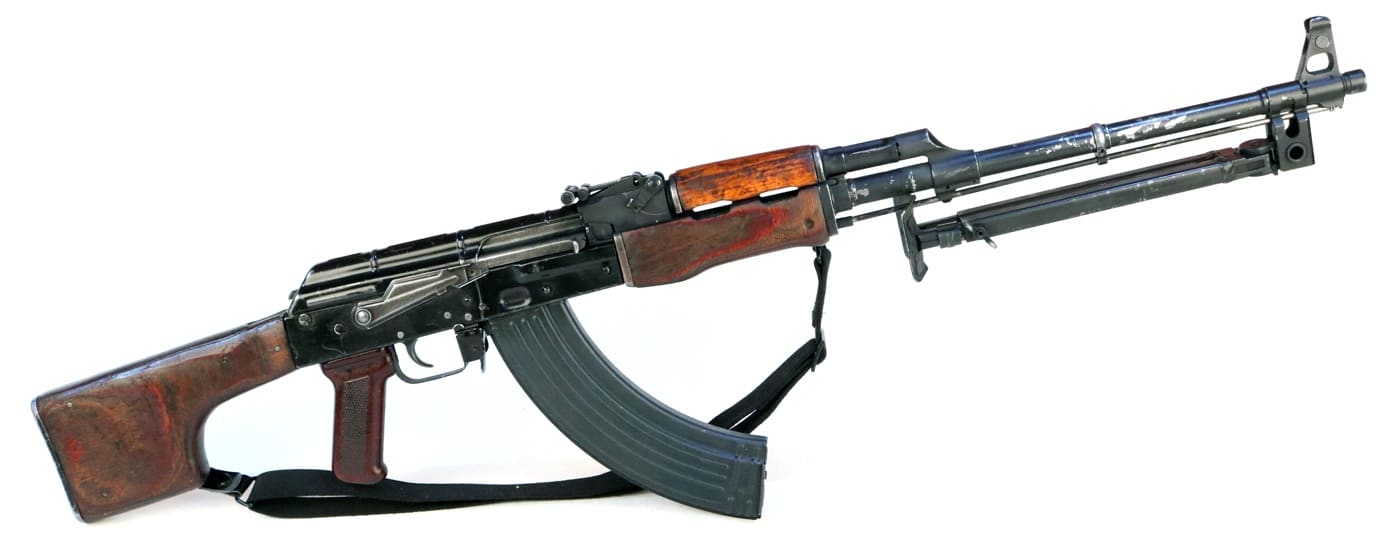
Developed in the early 1960s as an adjunct to the Soviet AKM rifle, the RPK (or Ruchnoy Pulemyot Kalashnikova) occupies a curious spot in the pantheon of Combloc infantry weapons. The rough equivalent of the classic Browning Automatic Rifle (or “BAR”, which you can read more about here,) or the modern M27 Infantry Automatic Rifle, or “IAR”), this fixed-barrel, magazine-fed support weapon really should have been obsolete at the time of its introduction. By contrast, the author argues the RPK is one of the most under-appreciated weapons in the world, even today.
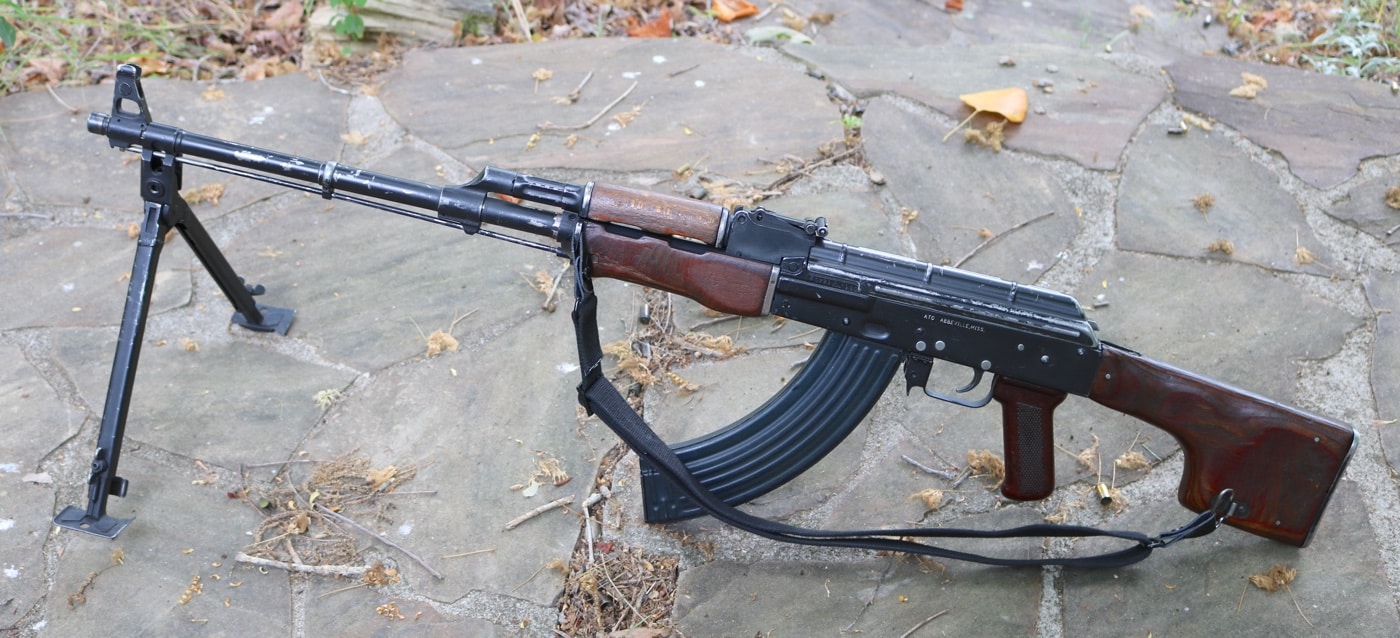
Designed by Mikhail Kalashnikov, the RPK is a light machine gun that shares many parts and features with the AK-47/AKM series of rifles including interchangeable magazines and a common cartridge. Let’s dive in and take a look at the guns.
A Kalashnikov Pedigree
The RPK is the light machinegun version of the stamped receiver AKM assault rifle. Original RPKs fire the same 7.62x39mm rounds as the classic Kalashnikov assault rifle. Featuring an extended 23” chromed-bore heavy barrel and an empty weight of 10.6 lbs., the RPK is both bulkier and heavier than the standard rifle. What you get for that investment, however, is a great deal of control in all modes of fire.
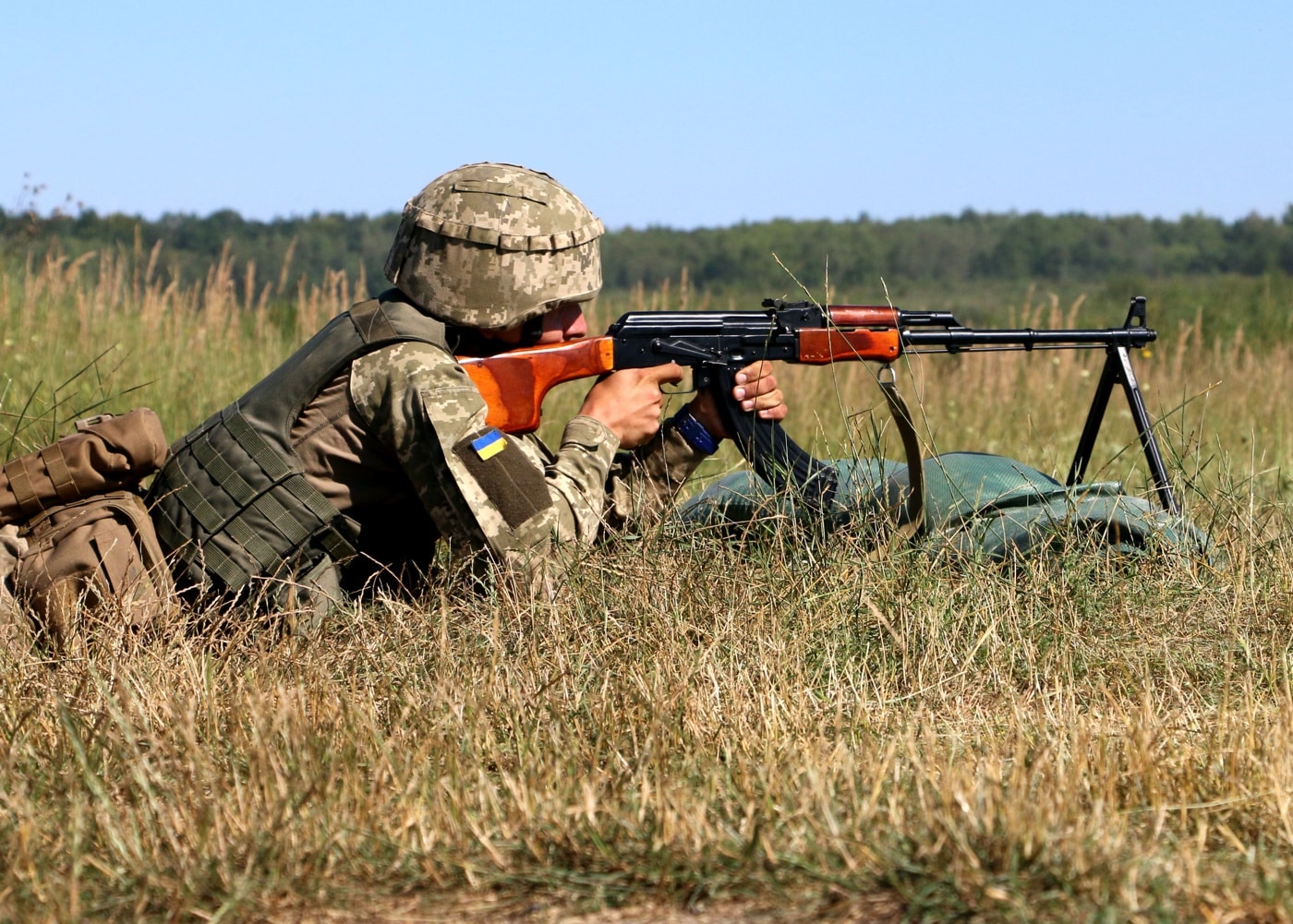
Though the RPK looks like an AK, there are a number of important differences. The receiver is formed from 1.5mm-thick sheet steel, whereas that of the AKM is 1mm thick stamped steel. The RPK has a roughly 20mm longer receiver and cannot be replaced with an AKM receiver. This extension increases bolt travel and slightly decreases the cyclic rate of fire. The RPK chugs along at about 600 rounds per minute.
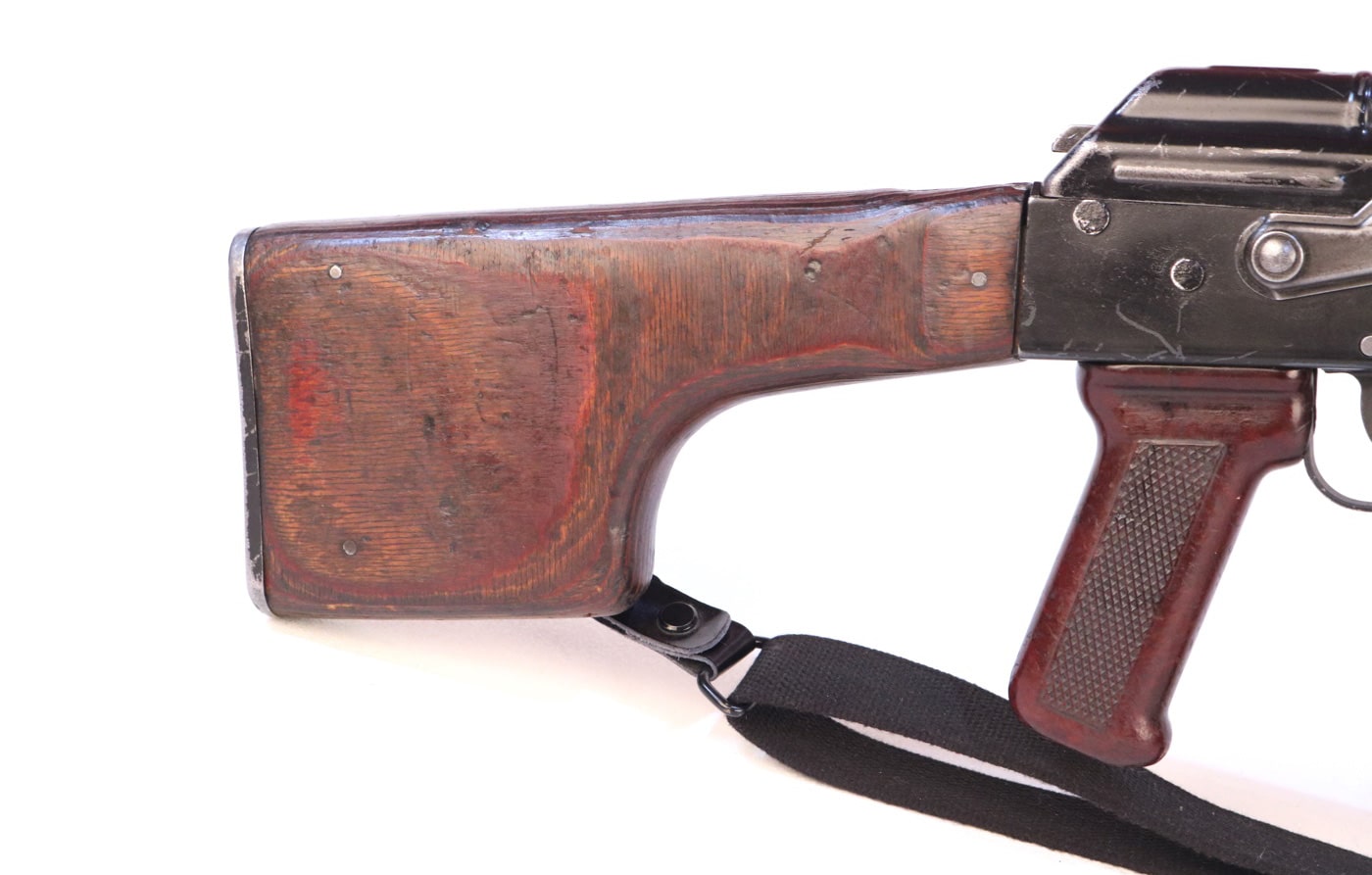
The distinctive wooden clubfoot stock enhances control when the gun is fired from the prone. The forearm and handguard are slightly beefier to help manage heat during sustained firing. The rear sight is adjustable out to 1,000 meters in 100-meter increments and includes a windage adjustment feature unique to the RPK.
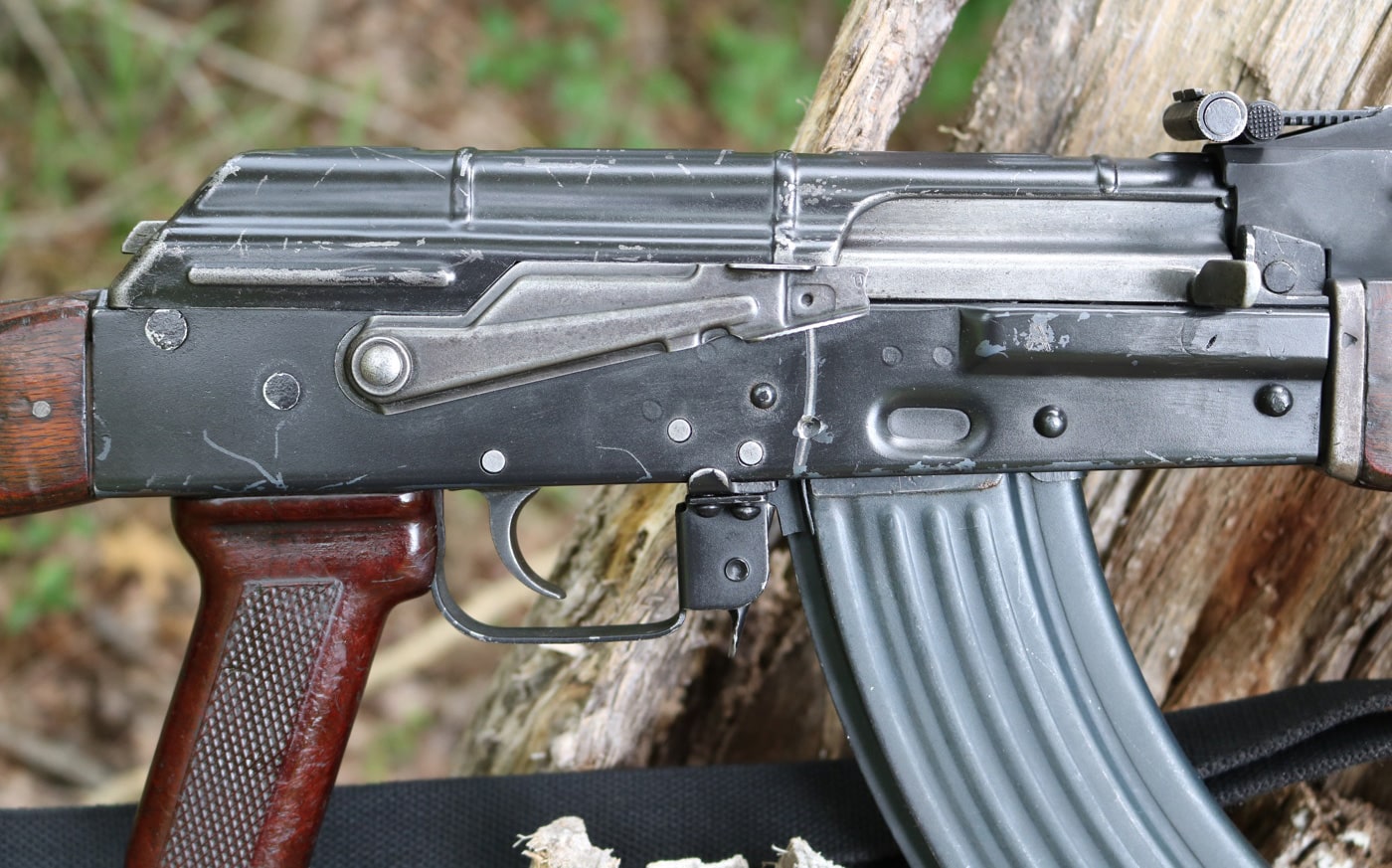
The RPK accepts any standard AK magazine. There are 40-round extended box magazines as well as two different sorts of 75-round drums available for the gun. European drum magazines are generally sealed, load from the top, and sport a lever on the back to help manage spring tension while loading. The Asian sort opens from the back and loads like the drum from a PPSh SMG or Thompson. The Asian drums have to be wound up with a key once loaded to ensure proper lift capability. Extended RPK magazines are often prized for use in standard infantry rifles for initiating ambushes and such.
The RPK bipod pivots freely around the barrel. Its legs are extendable for command height. There is a spring steel clip that holds the legs together when the bipod is folded. When stowed, the feet of the bipod pinch the cleaning rod to keep it out of the way.
Variants
The Soviets developed a number of RPK variations. One of the first was the RPKS which used a wooden, side folding stock for compact carry and storage by Russian paratroopers. Because of the folding stock, the rear sling loop is located on the right side of the gun. With fixed-stock guns, the loop is on the left side of the LMG.
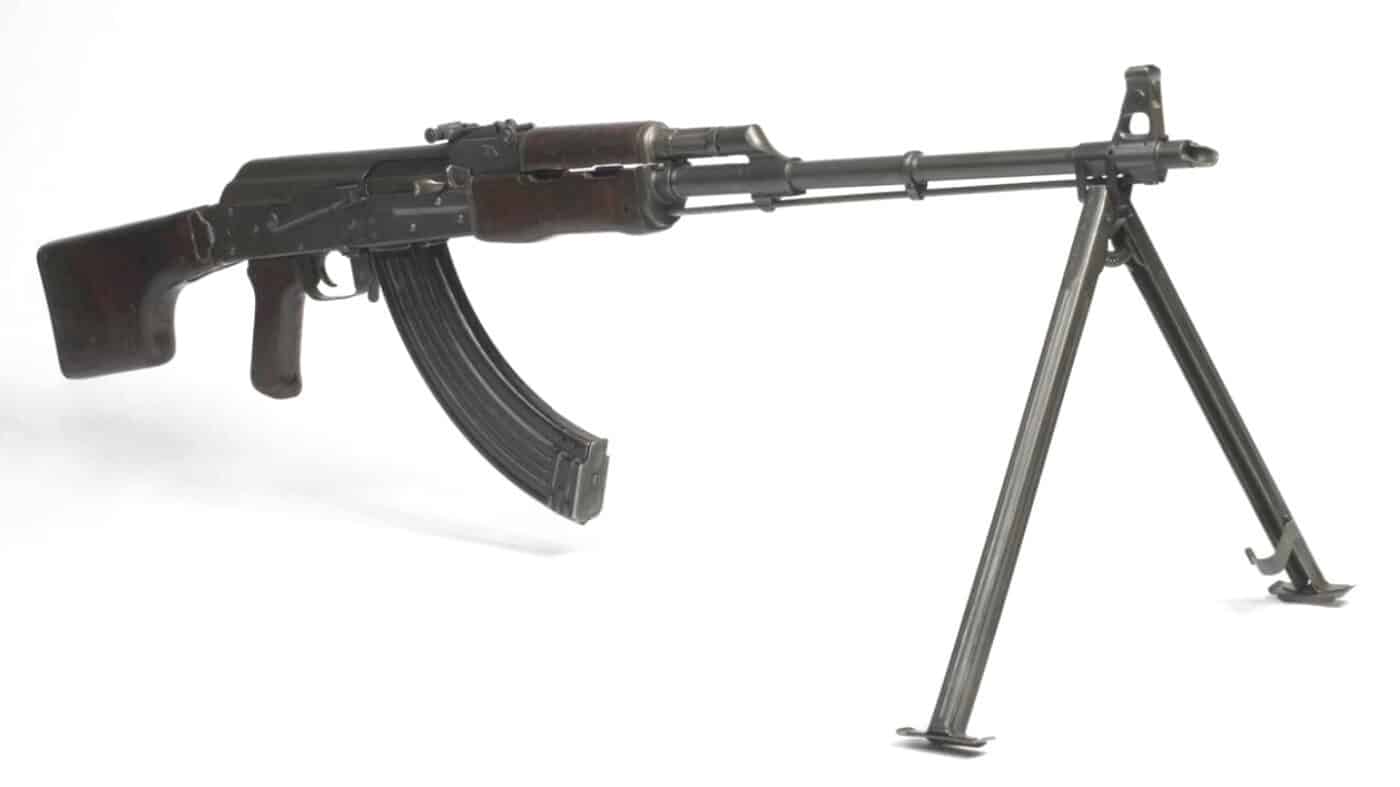
A modernization of the RPK platform took place with the introduction of the RPK-74 in 1974. Chambered for the 5.45x39mm cartridges used by the AK-74, the guns were introduced together. The newer RPK-74 is about an inch longer than the original LMG. The Red Army also introduced a paratrooper version of the RPK called the RPKS-74. Like the original, it features a side-folding stock.
The most recent modernization of the weapon platform resulted in the RPK-74M. This updated rifle kills the wood furniture and replaces it with polymer. The new parts include the pistol grip, stock and handguard. It also adds an optics rail on the left side of the receiver. The magazines are interchangeable with the AK-74 series of rifles. RPK-74M rifles come with a cleaning kit.
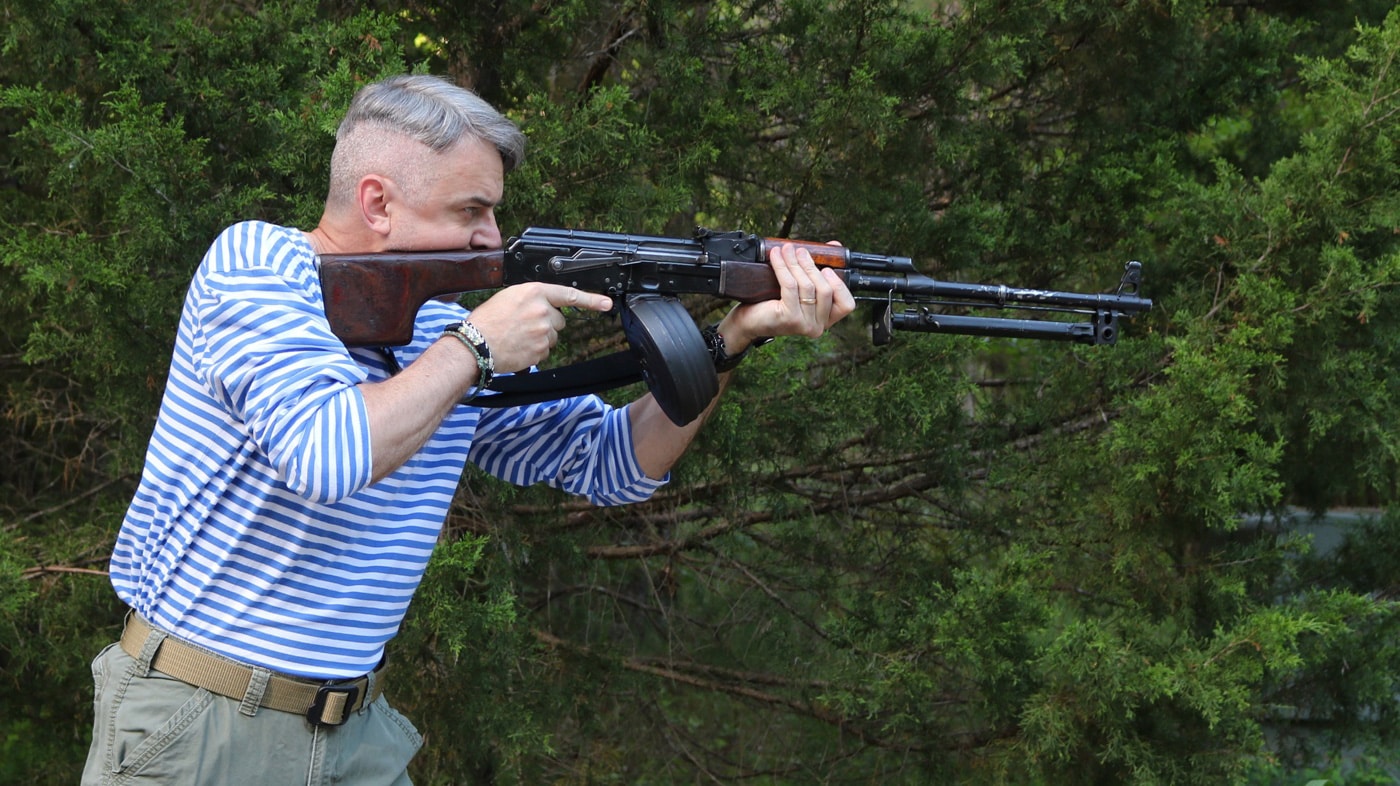
One of the more unusual variants — from a Western perspective — is the RPK-201. This light machine gun is chambered for the 5.56x45mm round. This is the same cartridge many of us call the 5.56 NATO and is compatible with many .223 Remington guns. See this article on the differences and similarities of the .223 and 5.56.
Variants with the letter N are designed for night vision compatibility. These include models like the RPKN and RPKS-74N2.
RPK Specifications
| Caliber | 7.62x39mm |
| Overall Length | 40.9″ |
| Barrel Length | 23.2″ |
| Weight (empty) | 10.6 lbs |
| Action | Long stroke gas piston |
| Cyclic Rate of Fire | 600 rpm |
| Feed System | 30/40-round box magazines and 75-round drums |
Trigger Time
The RPK is heavy enough for modest sustained fire yet remains sufficiently lightweight to be run from the shoulder in a pinch. Kalashnikovs are not designed to be precision rifles, but semi-auto groups are still not bad. On rock and roll, the RPK produces a nice, predictable beaten zone. The gun does get really hot after about three magazines on full-auto.
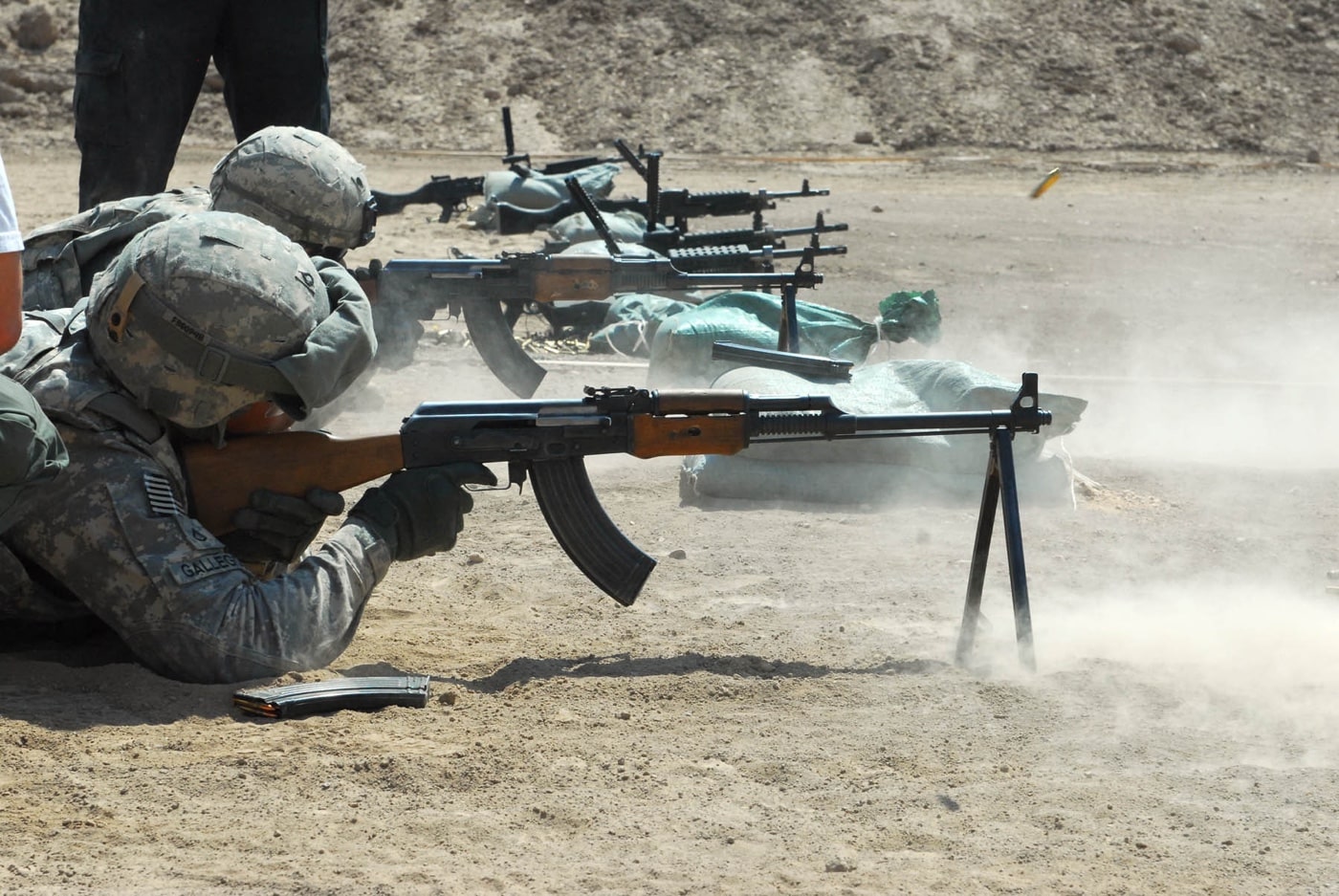
The lack of a quick-change barrel limits the RPK to true squad auto applications. For sustained fire operations you need a PKM. However, the gun is easily portable and fast in action. Additionally, the manual of arms is identical to that of every other AK rifle in the world, even if it is longer and heavier, so the weapon requires minimal dedicated training to operate effectively.
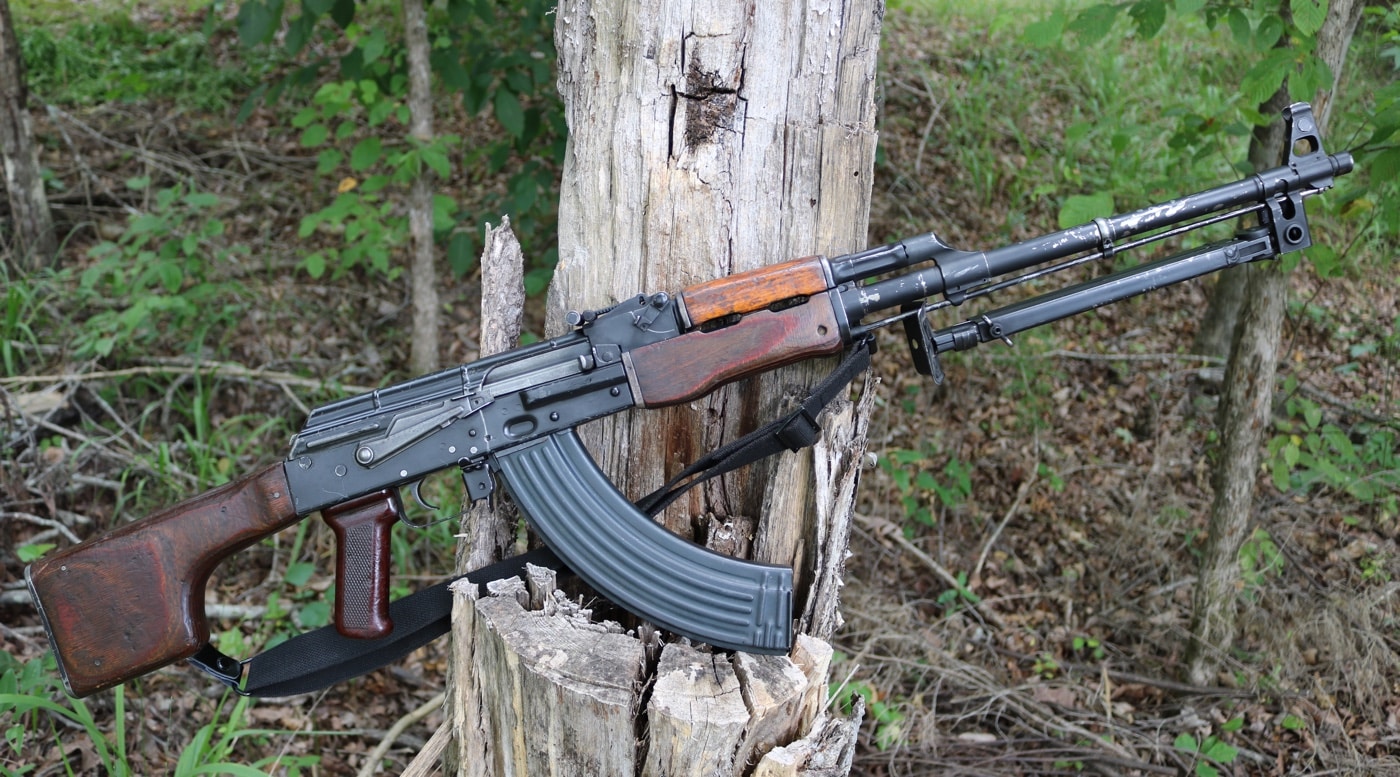
In my travels as a soldier and a gun writer, it has been my privilege to shoot most everything over the years. Some very nice guns weren’t, while a few that seemed unremarkable were. The RPK is a surprisingly effective light machine gun. Portable, powerful, reliable, and cool, the RPK is indeed a truly superlative automatic weapon.
Editor’s Note: Please be sure to check out The Armory Life Forum, where you can comment about our daily articles, as well as just talk guns and gear. Click the “Go To Forum Thread” link below to jump in!
Join the Discussion
Continue Reading
Did you enjoy this article?

 67
67






